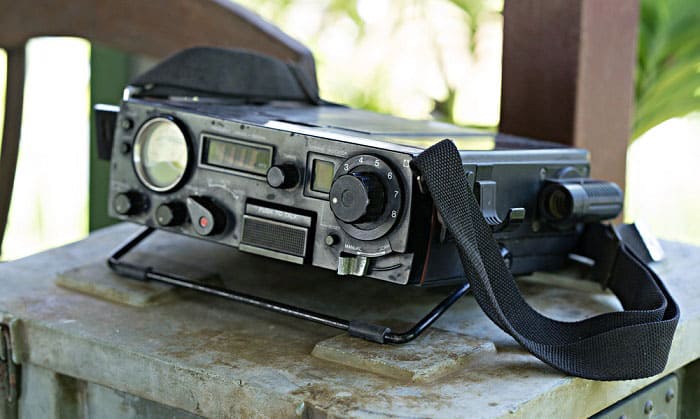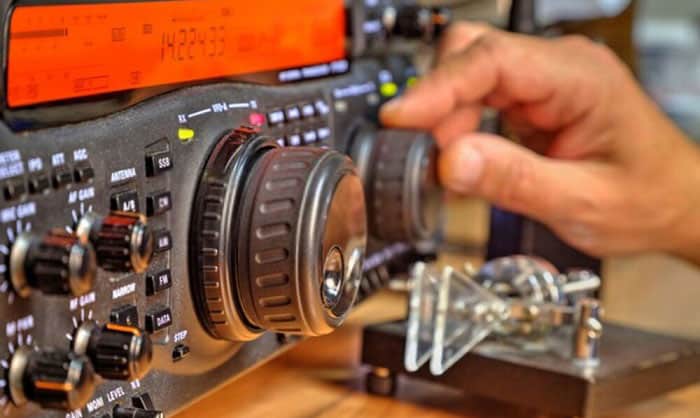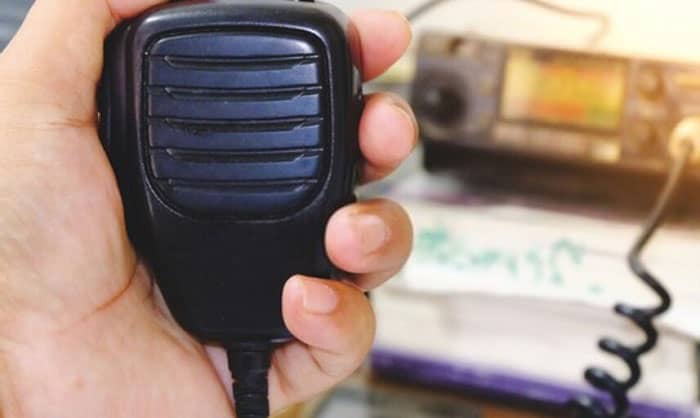Since its invention in the late 1800s, the radio has developed into numerous distinct forms, each serving a particular purpose. One of the most common types of radio is a 10 meter radio. Unfortunately, if you’re a newbie, it might be overwhelming for you to find information about this radio as it can be easily confused with others.
And that’s the reason why we make this article comprehensive and try to help readers understand “What is a 10 meter radio?”. So you don’t have to worry anymore because the information in this post was carefully selected.
Please keep scrolling and reading all the way to finish! We will take you through all the information you need to know about a 10 meter radio!
Table of Contents
10 Meter Radio: What Is It?
A 10 meter radio, also known as amateur radio or ham radio, uses a set of frequencies specified by The Federal Communications Commission (FCC). You’ll need specialized equipment, a license, and training to operate a 10 meter ham radio.
10 meter radios, like shortwave radio, can transmit signals hundreds of kilometers away. As a result, many individuals find it a useful device since it allows them to communicate with users worldwide while also improving their broadcasting abilities.
If a natural catastrophe disrupts local communications, ham radio users often step in to convey critical and often life-saving information. So let’s dig in to understand more about this interesting device!
All About 10 Meter Radios
As mentioned above, 10 meter radio requires license before being used for personal enjoyment, experimentation, self-training, practice, emergency communications, or any other non-commercial purpose. The FCC oversees amateur radio in the United States and grants licenses to “hams” who wish to use its airwaves.
The 10 meter frequencies range is from 28 to 29 MHz. Meanwhile, CB radios use the 11 meter band (27 megahertz). Both bands provide the radios with varying levels of performance.
10 meter radio vs CB radio
It’s confusing for newcomers to distinguish between a 10 meter radio and a CB radio since they have a quite similar appearance. However, they are a little different in use.
So 10 meter radio vs CB radio, what is the difference? As mentioned above, you can’t operate a 10 meter radio without a 10-meter radio license, which is totally different from a CB Radio. The reason why is because 10 meter radios are permitted to have more wattage/power output than CB Radios.
CB radios are limited to a maximum output of 4 watts per FCC restrictions, while the 10 meter band requires greater power since it is meant for long-range communication.
The potentially very high power output (radio radiation) of 10 Meter Radios (equivalent to a microwave) can actually harm soft tissue and organs. Thus, correct use is critical!
So please ask the seller carefully to not choose the wrong radio type when buying one!
Regarding ham radio, I like the galaxy 10 meter radios since they come with a pretty compact design, beautiful blue lights, and fantastic sound quality.
Use of a 10 meter radio
Because it provides two-way communication that can withstand earthquakes, storms, and most other disasters, 10 meter ham radio is still vital today.
Because of the increased transmitting power authorized to the radio operators, their wireless signal may reach well beyond the range of mobile phones, family radios, or even CB radios. Therefore, the use of amateur radio for communication is critical in any emergency circumstance.
Here are some specific uses of a 10 meter ham radio:
- Using FM repeaters to operate locally
- Using HF to operate in a long distance
- Using text over the radio (RTTY, PSK31, and other digital modes) for “chatting”
- Using Packet to send data
- Using ATV (Amateur Television) to send video over the radio
- Creating 10 meter antenna
- Communicating in emergencies
- Contests
- Experimenting with low-power (QRP) functioning
Amateur radio appeals to people with a diverse variety of interests because of its numerous elements. Many amateurs begin with an interest in radio communication and then mix it with other personal hobbies to make the activity enjoyable.
Radio contesting, radio propagation research, public service communication, technical experimentation, and computer networking are only a few of the main interests of amateur radio operators.
There are also a lot of amateur radio operators who volunteer their time and generally use 10 meter mobile radio for local public service activities such as races, parades, and civic festivals.
When conventional local connections, such as house telephones and mobile phones, are unavailable due to calamities such as terrorism, tornadoes, hurricanes, and other natural disasters, radio communication is valuable.
How to Get a 10 Meter Radio License?
Radio transmission licenses are strictly regulated by countries because radio waves spread over national borders and hence, are of international significance.
Definitely, you need a license if you want to operate a 10 meter radio (usually called an amateur radio license). The Federal Communications Commission is in charge of amateur radio licenses (FCC).
Your name will be published in the FCC Universal Licensing System along with a ham radio callsign if you are licensed. Lucky for you, it’s not too difficult to pass the exam for a 10 meter radio license.
There are 3 levels of a 10 meter radio license: Technician Class, General Class, and Amateur Extra Class. To acquire a higher level, you must pass the lower level’s criteria as well as the higher level’s exam.
In addition, there are 3 basic requirements before getting the exam:
- A valid Taxpayer Identification Number (such as a social security number)
- A valid mailing address
- A test fee
Conclusion
After reading this article, you should know the answer to “What is a 10 meter radio?”
We hope you find the information above applicable and helpful. If you have any further questions on this topic, please let us know in the comments. It’s our pleasure to hear from our readers and provide helpful content.
Finally, please share this article with your friends or anyone with the same interest in radios. Don’t forget to revisit us for more valuable tips and advice.

Hi, I am Amaro Frank – the Wind Up Radio’s content editor and writer. Working with Adam is so much fun, as his stories and experiences enrich my knowledge about radio communications and radio accessories. My main tasks in Wind Up Radio are building content and generating great articles on different topics around radio accessories.




